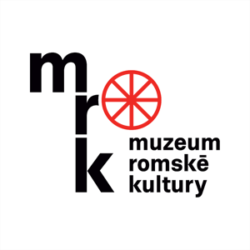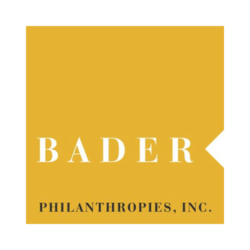Imrich Daško
Imrich Daško, born 1923, Čierny Balog – Vydrovo, Brezno district
-
Testimony abstract
Imrich Daško had two brothers, and half-sisters by a different father.[1]
Daško's father was respected by both Roma and Slovaks, and earned his living as a musician and blacksmith. Later he owned two horses, which he rode, and he also worked for the parish priest. He had a plot of land and Imrich already helped him plough the fields when he was ten years old. He spoke of his father as an honest man.
- [1] Number not given.
Twenty-year-old Daško enlisted in the Slovak army in October 1943 in the town of Podolínec, but at that time Roma and Jews were thrown out of the army and he said they were placed in a labour camp.[1] Therefore he had to work with two other Roma on the construction of a railway line near the town of Stará Ľubovňa. Daško had an acquaintance there, a Slovak soldier, and so instead of working he was put on guard duty. He spent three and a half years in the army.[2] They were in the camp until December 1943, then they were allowed to go home on leave, and on their return, men were recruited for work [in Italy (ed.)]. However, only men with Slovak nationality could leave – those with Jewish or so-called Gypsy nationality remained in the camp. Daško, like all the Roma from the vicinity of Banská Bystrica, had Slovak nationality. They were kept in quarantine in Banská Bystrica until April 1944; among them were Slovaks and men of other nationalities, engineers, artillerymen, cavalrymen and infantrymen. They had no idea where they would go or what unit they would be assigned to. The order to leave was given one night,[3] when they were put on freight trains, and only when they saw the Alps from the windows did they realise that they were going to Italy. In Austria they were delayed because the railway line needed to be repaired after bombing. There was an Italian [labour] camp nearby and also a factory. There were Italian women in the camp who wanted them to take them to Italy; some of them actually managed to be transported secretly, and one was in the wagon in which Daško was travelling. They reached the port of Marina di Ravenna, where they were to relieve Slovak soldiers being transferred to Italy from Russia. The train arrived there shortly after the Americans had struck the barracks during the bombing of the port, and Daško and the others were rescuing the wounded and dead from the rubble. The next day it turned out that his brother, Stefan Daško, was among the wounded and that he had been taken to hospital. Later he was able to visit him before he and the other wounded were taken to Bratislava.
Imrich Daško describes how the transport then went as far as Milan, then south again to Sicily to the town of Cassino,[4] where they arrived in May.[5] He remembered that there were already ripe tomatoes and figs there, and he says that he learned Italian in Sicily because his commander, who was a good accordion player, got hold of a violin and they used to play together at parties when they had free time. He then acted as interpreter for the company.
Then the Germans took them over and divided the six and a half thousand soldiers into two companies, which built bunkers, bridges and railways, and carried out other dangerous work on buildings that the Americans were attacking – which was why they sent the Slovaks there. He says that when they were building the bridge over the Piava River, the Americans bombed them and many soldiers were killed; this was in June or July 1944. After that they retreated westwards, back to Milan, and at that time Daško and two other Roma escaped from the unit; wanting to go home or possibly join the partisans. When the trio of starving refugees finally reached the city of Bologna, they met an Italian railwayman at the train station who understood what they were talking about because his father was from Slovakia. When they told him that they wanted to go to Vienna or Bratislava – from there they would find their way somehow – he advised them that a German transport that had just brought cattle to the station would soon be going back. So they buried themselves in manure and straw and rode through Udine to the Austrian border, where they were discovered due to their own negligence. They were escorted back to Bologna, locked in the barracks and interrogated. A Slovak priest, a doctor and two nurses from another battalion, who had been caught in a military ambulance while escaping, were locked up with them. They were taken to their unit in Ferrara, but Daško and some others escaped again, were caught again and locked up in a farmhouse among the pigs. They managed to escape from there, and spent three weeks with an Italian whose son was a prisoner of war in Germany and therefore disliked the Germans. He then took them across the Po River to the partisans, with whom they made their way to Milan, where the end of the war found them. They were taken over from the partisans by the Americans.
Daško reported that he was present when the Americans and the partisans captured and shot the Italian President Benito Mussolini and his mistress when they were fleeing to Rome,[6] and hung them upside down. He goes on to recall what the partisans did to the Germans on the Piava: they received a report from the Americans that a German tank brigade was retreating and they had to stop it. Four Roma, including Daško – one from the village of Hriňová, one from Zvolenská Huta,[7] another from Myjava pod Bradlom – were on patrol. Daško was to fire when the last tank drove by. The German commander who, contrary to custom, was not riding in a covered vehicle, stopped by Daško and began to question him, thinking that he was a Slovak who was on the side of the Germans. The partisans started shooting, and the Germans returned fire; many partisans were wounded. They failed to stop the Germans, but the partisans managed to report the incident and laid anti-tank mines on the road. So the Germans did not get through; some died, and others surrendered to the Americans.
Daško related [in the interview] how a barracks somewhere in Italy was bombed on Christmas Eve, just as the soldiers were receiving parcels from the Slovak Red Cross – razor blades, biscuits. More than a hundred men were killed. There were many Roma among the soldiers with him in Italy; for example, from Komarno and Malacky. Daško was a company commander and had ten Roma under him, for whom he collected food and rations.
- [1] These were labour units, to which Jews and some of the “tsiganes” were assigned, not being recognised by the conscription committee as "Slovaks", i.e. entitled to handle weapons. (ed.)
- [2] It also appears from other testimonies of witnesses that military service did not end with the war, but that that the soldiers were deployed on various operations even afterwards – for example, eliminating the Banderites in hiding. (ed.)
- [3] Not specified.
- [4] Not found in Sicily.
- [5] Year not given.
- [6] In fact, Mussolini wanted to flee to Switzerland. (ed.)
- [7] Not found.
When the war ended, Daško had to stay in Milan; they were unable to go home straight away because there was an investigation into who was fighting on which side. Slovak Germans and Slovaks who collaborated with the Germans were arrested. Daško and the others went on patrol, gathered food, and repaired roads and bridges. They wore American uniforms on which there was an armband with the word “Czechoslovakia”, and knee boots, and they got their pay and food from the Americans. In the post-war shortages, when there was nothing to buy, they sold cigarettes and other things to Italians in the hope of making money.
After returning to Slovakia, Daško helped to supply civilians, and was then assigned to Bratislava in September 1945, where he guarded prisoners. He served there until 1946, when the new recruits arrived. The older soldiers were released and those who were conscripted in 1943, including Daško, had to stay another year while the new recruits were trained. Daško says that he also guarded Jozef Tiso in prison.
On his return to civilian life, Daško had only his father. Their fields were expropriated. He began to live with his wife, who was then bringing up the two children of her sister, whom the Germans had murdered together with her husband; one was one year old, the other four years old. He joined the Union of Anti-Fascist Fighters and entered an agricultural-technical school. He was a member of the National Committee, being elected about eight times, and advocated that the statistics of people shot during the war should include Roma. It troubled him that the four Slovaks killed in the village had memorials, but the Roma victims did not. Although the authorities told him they had no money for it, after much insistence at district level [the District National Committee] they finally installed a plaque with an inscription detailing the number of Roma who had died.
How to cite abstract
Abstract of testimony from: HÜBSCHMANNOVÁ, Milena, ed. “Po židoch cigáni.” Svědectví Romů ze Slovenska 1939–1945.: I. díl (1939–srpen 1944). 1. Praha: Triáda, 2005. ISBN 80-86138-14-3, 301-316 (ces), 317-330 (rom). Testimonies of the Roma and Sinti. Project of the Prague Forum for Romani Histories, https://www.romatestimonies.com/testimony/imrich-dasko (accessed 10/31/2025) -
Origin of Testimony
Two interviews were conducted with Imrich Daško: the first was in January 1992 by Hana Šebková and Edita Žlnayová, the second in November of the same year by Milena Hübschmannová and students of Romani Studies Milena Alinčová and Hana Syslová. Both accounts give the same basic facts, chronology of events, and geographical names of the places where Daško was active during the war. The first recorded narrative is presented in the book as a coherent whole, followed by the second interview, recorded later. Imrich Daško's wife Pavlina Dašková was present, and complemented her husband's information about the events at the end of the war, describing the tragic death of her relatives.
-
Where to find this testimony




